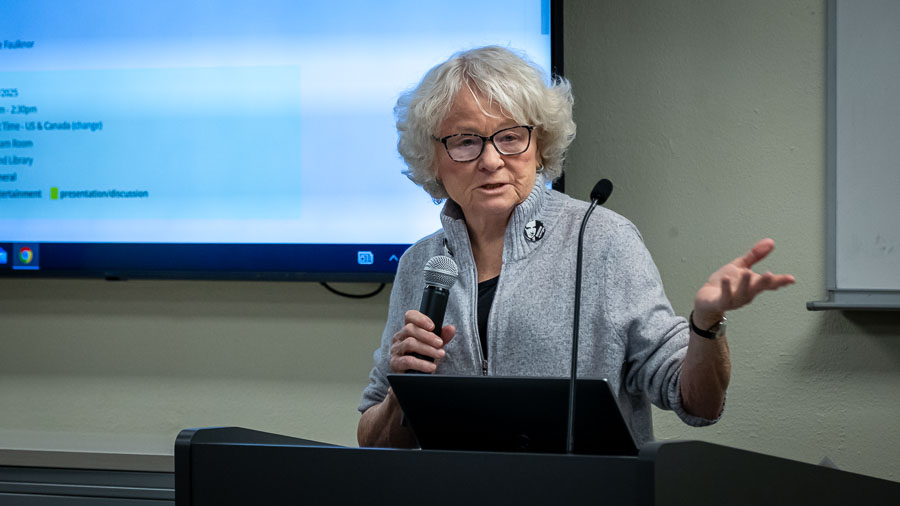Asante poorly screens patients for charity care, sues large numbers for medical debt, advocacy group says
Published 6:00 am Wednesday, July 19, 2023

- The Asante emergency room entrance in Medford. Asante did not respond to the Dollar For report but said it has provided nearly $177 million in community benefit spending — which includes charity care — from Oct. 1, 2021, to Sept. 30, 2022.
An analysis by a patient advocacy group says Asante health system is ineffectively screening patients to see if they qualify for financial assistance in paying down medical bills.
One of two major health systems in Southern Oregon, Asante also appears to be among the state’s more litigious in suing its patients for unpaid medical debt, the advocacy group argues.
Earlier this year, Dollar For, a Pacific Northwest nonprofit that helps patients apply for charity care, released a study titled “Pointless Debt: How Oregon hospitals skirt financial assistance laws to charge patients — without increasing revenue.”
The study focused on how well Oregon hospitals had implemented HB 3076, a 2019 state law meant to ease medical debt burdens on low-income patients.
HB 3076, which went into effect in 2020, filled gaps in the Affordable Care Act, which mandated that 501(c)(3) hospitals have a financial assistance policy “for all emergency and other medically necessary care,” the IRS website says, but didn’t set an income threshold for qualifying patients.
Under HB 3076, patients at or below 200% of the federal poverty level qualify to have their out-of-pocket medical expenses forgiven.
Patients between 201% and 300% of the poverty level can get at least 75% of their debt forgiven; those between 301% and 350% of the poverty level can get at least 50% forgiven; and those between 351% and 400% can get at least 25% forgiven.
“Anyone that’s at or below 200% of the federal poverty level and goes to any Oregon hospital, not just Asante, should never be sent to a debt collector,” said Eli Rushbanks, Dollar For’s general counsel and policy director. “In fact, they shouldn’t ever have to pay that bill. It should just be forgiven by the hospital, and the hospital is sort of made up for that with tax exemptions and other benefits by the government.”
Dollar For scoured debt collection dockets in the Oregon Judicial Department’s online court records system and noticed General Credit Services showing up rather frequently in Southern Oregon. When Rushbanks dug into the cases, he saw that most of the debt-collection activity was for Asante bills.
“Asante files a lot of cases,” Rushbanks said.
Further digging through garnishment documents — which contain income data on indebted individuals — turned up patients who appeared within 200% FPL. Some had listed their last employer as Dick’s Sporting Goods and Walmart and said they worked in retail.
“Appeared” is a slight caveat, Rushbanks said. Many documents only show the defendant’s income and are silent on whether other earners live in the household. Those two ingredients are needed to calculate a person’s FPL.
“However, it’s a pretty educated guess because, under Oregon law, the debt collector can list as a defendant the spouse of a debtor, and also go after their income, as well,” Rushbanks said. “So, presumably, if there was another income earner in the household — if the person had a spouse and they earned an income — they’d be listed as a defendant.
“So we estimate that everyone on there is a household of one, and we use their income and based our numbers off of that,” he continued. “That’s probably a pretty dramatic undercount of the people affected because there could be any number of single parents.”
That is, even one child would increase the household size to two while lowering the earner’s FPL.
Several months before publishing “Pointless Debt,” Dollar For sent Asante a letter listing examples of patients that Asante had sued.
“The number of debt collection lawsuits against low-income Oregonians indicates Asante is either not screening patients at all, or the screening process employed is feckless,” the letter says.
The letter also points out that, in many cases, Asante is seeking “relatively small amounts.”
“After fees for attorneys, service, filing, etc. are added, amounts rarely exceed $7,000 or $8,000. The actual amount of money Asante receives from suing low-income patients hardly seems financially worth it given that … not adequately screening patients before referring them to debt collectors is a violation of Oregon’s unlawful collection practices act, which authorizes punitive damages.”
Asante did not respond to Dollar For and, in a statement to the Rogue Valley Times, said the health system does not comment on litigation.
In addition, the health system said: “Asante not only follows HB 3076, our organization goes beyond the standard 200% and provides free care to those with an income less than 300% of the Federal Poverty Guideline.”
Asante pointed out that the health system provided nearly $177 million in community benefit spending — which includes charity care — from Oct. 1, 2021, to Sept. 30, 2022.
Dollar For’s report notes that 42 out of 60 Oregon hospitals — including Asante’s three Southern Oregon hospitals and Providence Medford Medical Center — offered less charity care in the year after the law went into effect than in the year before.
Asante Rogue Regional Medical Center in Medford, Asante Ashland Community Hospital and Asante Three Rivers Medical Center in Grants Pass provided $7.6 million in charity care in fiscal year 2019, $7.4 million in 2020 and $6.9 million in 2021, according to the Oregon Health Authority.
Providence Medford Medical Center gave $5.9 million in charity care in fiscal year 2019, $5.2 million in 2020 and $5.1 million in 2021, according to the health authority.
Providence, the region’s other major health system, did not stand out in the data as a poor screener of patients, Rushbanks said.
In debt documents, “I didn’t spot a Providence-related trend,” he said.
In February 2022, Washington state’s attorney general filed a consumer protection lawsuit against Providence hospitals, among others, for suing patients who were entitled to charity care. The suit became part of a New York Times story published in October. Dollar For worked with the Times’ reporting staff on the article.
Rushbanks said the lawsuit may have compelled Providence to change its practices over the last year.
“We actually don’t see — in the data that we see and the patients that we work with — a huge issue with Providence right now,” he said. “I’m very hesitant to say that Providence is doing a good job, because we haven’t really seen the data show that yet, but it seems that they’re not doing nearly as poor of a job.”
Based on health authority data, Dollar For calculated that patient pay accounts for, on average, about 1.6% of revenue for hospitals across Oregon, with the rest coming from Medicare, Medicaid, commercial insurance and other sources.
“When charity care and financial assistance giving increases, because bad debt decreases and patient revenue stays the same, it implies that this money being sent to debt collectors and people are being garnished for is money that is otherwise sitting as just bad debt on the hospitals’ bottom line,” Rushbanks said. “And when they do or don’t collect it, it doesn’t seem to affect profitability at all — which is kind of why the report got the name ‘Pointless Debt.’”
He continued: “In other words, if they were to just follow the law and give out more charity care, it would make their bad debt column in their financial reports go down, but it wouldn’t hurt their overall profitability.”
A 2021 Oregon State Public Interest Research Group report showed that medical debt was implicated in more than half of the state’s Chapter 7 and 13 bankruptcy filings in 2019.
After the Labor Day fires of September 2020, Brian Shaw, then 64, of Kiln, Mississippi, worked in Southern Oregon on a Federal Emergency Management Agency team that put fire survivors in mobile homes.
While in the area, he fell in his hotel room’s bathroom. Shaw’s right knee, which had undergone surgery along with his left, became inflamed as he struggled for hours to stand. He was treated at Asante Rogue Regional Medical Center.
Shaw stayed in the hospital nearly a month. When he was released, he still had trouble walking. Unable to perform his duties at work, Shaw lost his job.
He owed Asante $1,172.
“I started getting bills from them, and I called them to see about assistance,” he remembered, “and they kept denying me, telling me I made too much money.”
Shaw explained to Asante that he had no money coming in, he said.
While searching for nonprofits that could help, he found Dollar For, which only needed his proof of income.
The hospital, Shaw said, “realized that there was no way I could afford to pay back every penny that I owed them.”
Asante forgave his bill and reimbursed him the amount he had started paying on it, he said.
Shaw said he has nothing but praise for the hospital’s doctors and nurses who treated him.










